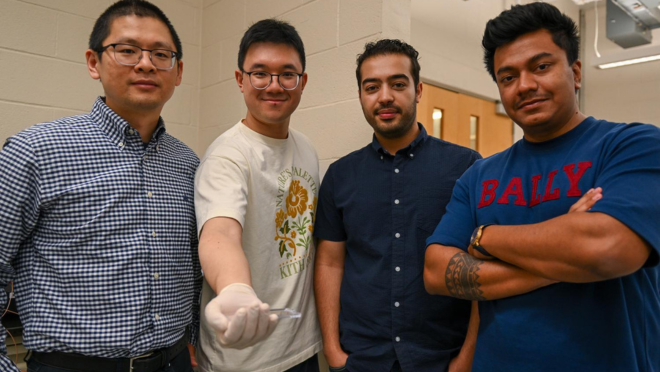Bangladeshi researcher Pramit Ghosh and his team break 165-year-old law of thermal radiation
Bangladeshi researcher Pramit Ghosh and his team break 165-year-old law of thermal radiation

Pramit Ghosh, an alumnus from BUET’s Mechanical Engineering Department, along with his team at Penn State University, broke a 165-year-old law of physics — a development that could reshape the future of solar energy, heat transfer and sensing technologies.
Pramit Ghosh, a mechanical engineering doctoral student at Penn State University, is one of the authors of a study that demonstrates a strong, experimentally verified violation of Kirchhoff’s law of thermal radiation according to the official website of Penn State University. The findings are set to be published in Physical Review Letters on 23 June and have already been highlighted by the journal as an “Editor’s Suggestion”.
Kirchhoff’s law, formulated by German physicist Gustav Kirchhoff in 1860, states that a material’s ability to absorb radiation must equal its ability to emit radiation at the same wavelength and angle — a principle known as reciprocity. While small deviations have been recorded in recent years, the Penn State team’s results show a much stronger and broader violation, making practical applications more achievable.
The breakthrough was made possible by a specially designed structure consisting of five thin semiconductor layers with slightly different compositions. This allowed the team to create an emitter that performs differently when absorbing and emitting thermal radiation, depending on the direction — a phenomenon known as nonreciprocity.
The contrast between absorption and emission reached 0.43 over a broad 10-micrometre wavelength band — the strongest result of its kind so far. Previous studies achieved contrast levels around 0.22 to 0.34, and often over much narrower bands.
The emitter, which is thinner than a strand of human hair, can be transferred to other surfaces — allowing it to be integrated into various devices. This could lead to more efficient solar cells that redirect unused energy to secondary collectors, potentially increasing overall power output.
The team developed a custom thermal emission spectrophotometer to measure the radiation emitted by the material under varying angles, wavelengths and magnetic fields. This system was essential to confirming the violation of Kirchhoff’s law and observing the effect with such strength and clarity.


